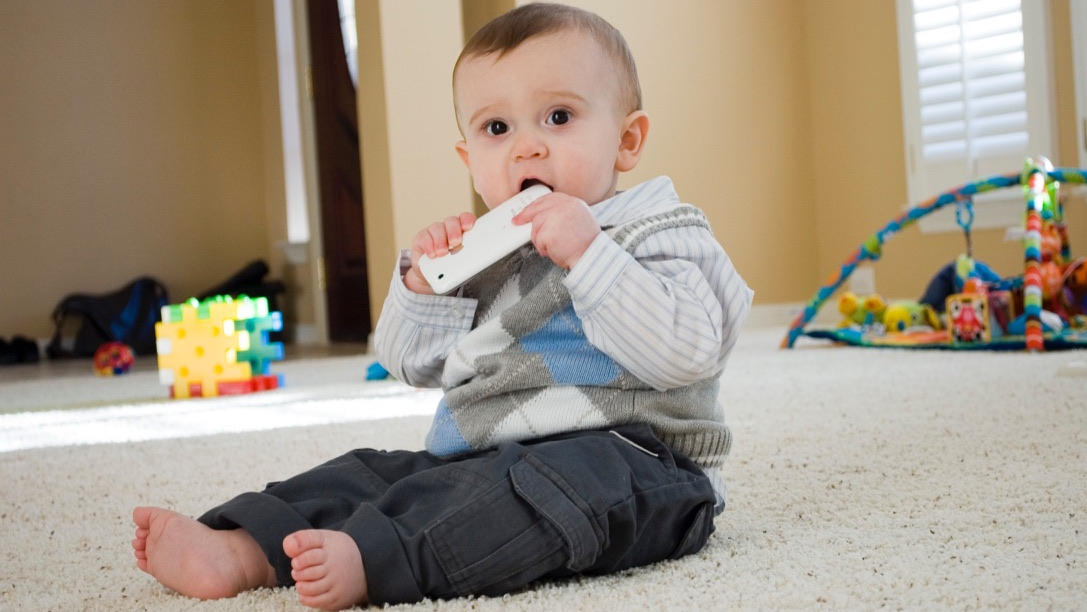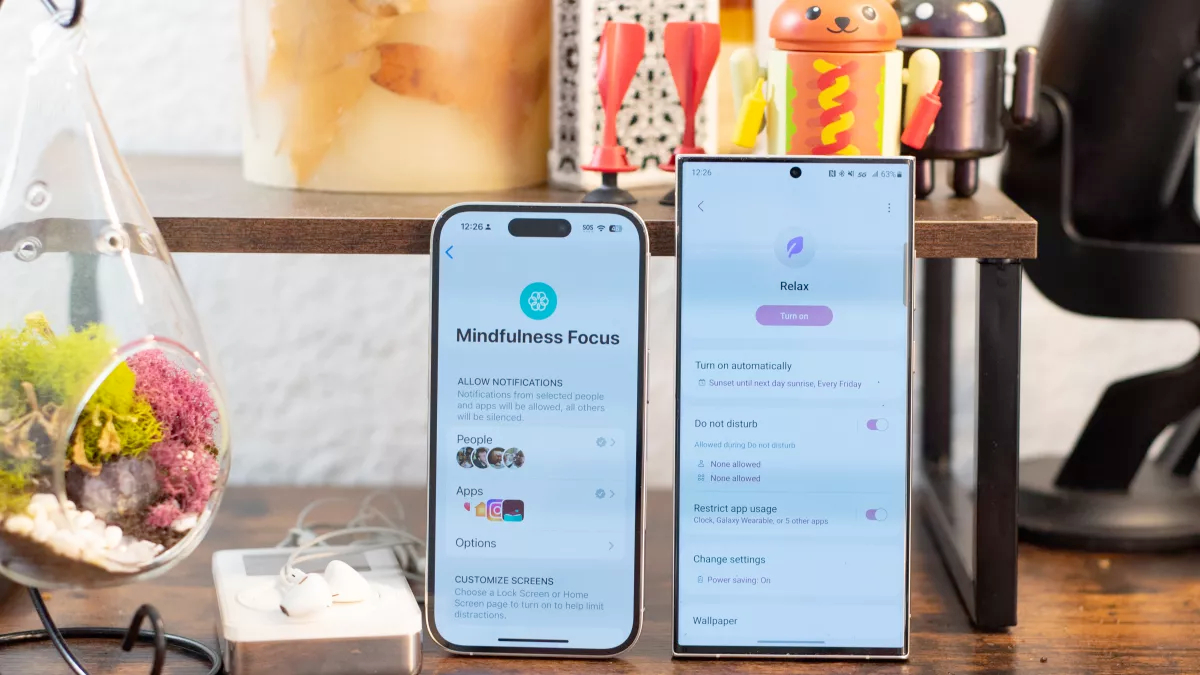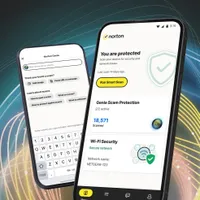A parent's guide to sending your child to school with a smartphone in 2025

For most parents, the question isn’t whether or not your kid will bring a smartphone to school, it’s when you let that happen. Your kid should carry a phone when it is useful for you, not when they beg for one. I'll help you navigate that decision.
I'm TechRadar’s main phone guy in the US, and I’m also a high school teacher with seven years experience. And I'm a parent – my kid is in high school, though he's had a phone longer than most children. Not because I'm a phone geek, I swear! He got a phone when I needed him to have one.
Here’s when to let your kid bring a phone to school, and what rules and boundaries you should set. I'll also recommend the best phones to buy… or not buy, when it's time for your kid to carry one.
Norton 360 Deluxe: There's always a bit of anxiety that comes with finally giving your child a smartphone. Help mitigate that stress with the parental controls offered by Norton 360 Deluxe. With Mobile App Monitoring, you can check in on their Android devices to choose which apps they can use. In addition, you can keep tabs on where they are with the Location Services feature. You'll be glad they've got a smartphone when it helps you keep track of them after school
Does every kid need a phone in school?

I taught in New York City in 2001 after the September 11 attacks. Cell phones were pretty new, but September 11 changed everything. My child must have a phone, parents said, in case of an emergency just like that one.
Today, New York schools prohibit phones. New York Governor Hochul instituted a ban on students using any personal, internet-connected devices in schools. That includes laptops, tablets, and even an MP3 player with a connection, like a Sony Walkman.
If your school bans cell phones, support the ban. It needs to have the support of teachers, the administration, and parents if it is going to work.
If there is no ban, make the smartphone a useful tool, with boundaries and expectations. Put your kid to work on the phone, in the same way we all use our phones to get our jobs done.
Sign up for breaking news, reviews, opinion, top tech deals, and more.
When should I buy my child a phone?
When should I buy my child a smartphone and let them use it on their own and take it to school with them?
You should buy your child a phone when you need them to have a phone. When you need to get in touch quickly or know their location, it is useful for your child to have a smartphone.
Buy your child a phone when you need them to have one
My kiddo is currently 16 and he has had a smartphone for 6 years. If 10 seems young to have a phone, we spent time apart after a job relocation and I wanted to keep in direct contact with him. I bought him a phone because I wanted to reach him, not because he wanted one.
If your kid is bugging you to buy them a phone, ask yourself if you need them to have one. No child needs a smartphone. If your life won't be improved when your child has a smartphone, it’s not time to buy them one.
How your child’s phone will make your life better
- You can always get in touch. If they ignore you, lock their phone. They’ll get the hint.
- Every phone has built-in tracking so you can keep tabs on their location, and it’s easy to find a phone if they lose it.
- Keep a calendar and schedule for your family using technology. Let your child wake themselves in the morning.
- Teach responsible photography before they get obsessed with selfies. They might capture memories you miss.
- Once they learn to use Maps they will never get lost.
Those top three are non-negotiable if my kid wants to keep his phone. He must stay in touch. He must share his phone’s location. He must use the family calendar and set his own alarms.
The best phone to buy: none, if you can help it

The best phone to give your kid is your old phone. You know how to use it. You know how to troubleshoot. The least complicated option is the one you already have.
Your second choice should be an older, cheaper version of whatever you have. If you have an iPhone 16, look for a used iPhone 13. That’s a great phone that still gets the latest software updates, so your kid won’t feel left out when friends are sending iMessages and AirDrops.
If you want an Android phone, even better. You can find affordable devices from Samsung and Motorola. Check out the Samsung Galaxy A36, which looks as sophisticated as the Galaxy S models and very durable.
If you want to splurge and you are signing your kid up for a new line of mobile service, you might find a better deal on a newer iPhone 16 or newer Galaxy S25 phone than an older device. Check with your carrier before you make your decision..
| Row 0 - Cell 0 | iPhone | Android |
More expensive | iPhone 15 ($699 / £699 / AU$1,249) | OnePlus 13 ($599 / £459) |
Save some money | iPhone 14 or 14 Pro used or renewed | Samsung Galaxy A36 5G ($399 / £399 / AU$549) |
Cheap but good | iPhone 13 or 13 Pro used or renewed | Moto G Power 2025 / Moto g56 5G (249 / 199 / 399) |
To help your kid focus, use the Focus modes

A Focus mode limits what apps you can use and what alerts and notifications you receive. There are Focus modes for school, for driving, or for bedtime. Every phone brand has its own version of focus modes, and they all work basically the same.
You can set up a Focus mode to engage when it detects the school’s location or the school Wi-Fi, if available. You can set up a Do Not Disturb at home during homework hours, ideally right after school and activities end. You can set up a bedtime routine that reminds your kid to wind down at the right hour.
Your kid will still have the ability to turn these modes off, so they are just a reminder, not a total lock.
The people in front of us are the priority
That’s how an adult should handle the situation
I teach my kid that the people you are with get priority over anyone on your phone. Give the person in front of you your respect and attention.
If you need to take a phone call or send a message, make sure it is acceptable. Read the room; ask permission.
When I was a teacher, my students got emergency calls – parents would call to ask dumb questions like where is the TV remote control? If students were polite, I let them leave the room to take a call. That’s how an adult should handle the situation.
Teach your child that if a teacher forbids cell phone use, they must not use the phone. If you want to be on the teacher’s side, don’t send your kid text messages during the school day.
It's rude to wear headphones when people are speaking

Of all the smartphone distractions I battled in my classroom, the most obnoxious was kids using headphones. AirPods are almost invisible, and they can be secreted to and from the ear without much notice.
Surprisingly, when I told students this was rude, they were often surprised. They hadn’t been taught it is rude to wear headphones when somebody else is speaking to you. Even when there’s no music playing? Yes. They honestly didn’t know, and most students did not want to be rude.
There’s AI on smartphones: let’s talk about it

AI tools like ChatGPT’s LLM are bad for education. They defeat the purpose. If a teacher assigns a problem or an essay and your kid uses ChatGPT, they are cheating themselves out of learning.
ChatGPT is not accurate enough, but that is beside the point. Eventually, AI will be accurate and completely undetectable, but it still won’t be good for education.
Using AI on the sly to do work is harmful. Unfortunately, it is almost impossible for teachers to prevent or detect this cheating. That means you need to discuss AI with your kid.
Education is exercise. We don’t go to school just for the facts, we go to exercise our learning. I don’t usually run to and from work, but when I go to the gym I run miles on a treadmill. I exercise to keep my body in good condition.
Your kid might not grow up to write essays or balance chemical formulas. That doesn’t mean ChatGPT should do the work. Make sure that kids know there is no learning and no pride to be found in work completed by ChatGPT or other AI. If they don’t exercise their learning, their mind won’t get stronger.
You might also like

Starting more than 20 years ago at eTown.com. Philip Berne has written for Engadget, The Verge, PC Mag, Digital Trends, Slashgear, TechRadar, AndroidCentral, and was Editor-in-Chief of the sadly-defunct infoSync. Phil holds an entirely useful M.A. in Cultural Theory from Carnegie Mellon University. He sang in numerous college a cappella groups.
Phil did a stint at Samsung Mobile, leading reviews for the PR team and writing crisis communications until he left in 2017. He worked at an Apple Store near Boston, MA, at the height of iPod popularity. Phil is certified in Google AI Essentials. His passion is the democratizing power of mobile technology. Before AI came along he was totally sure the next big thing would be something we wear on our faces.
You must confirm your public display name before commenting
Please logout and then login again, you will then be prompted to enter your display name.
